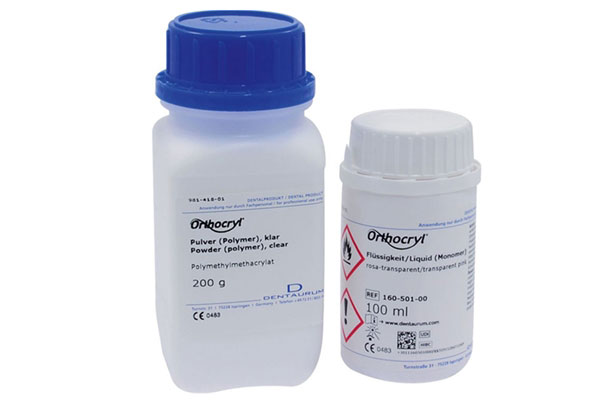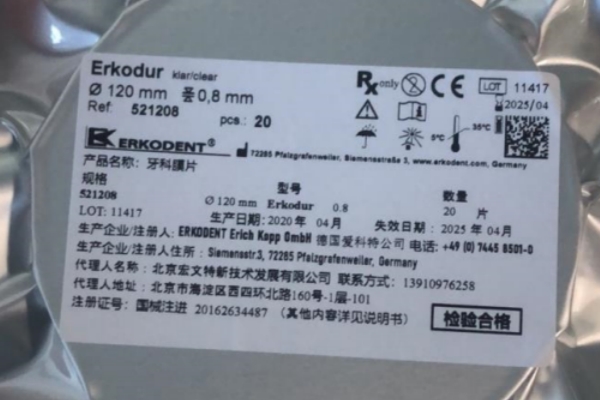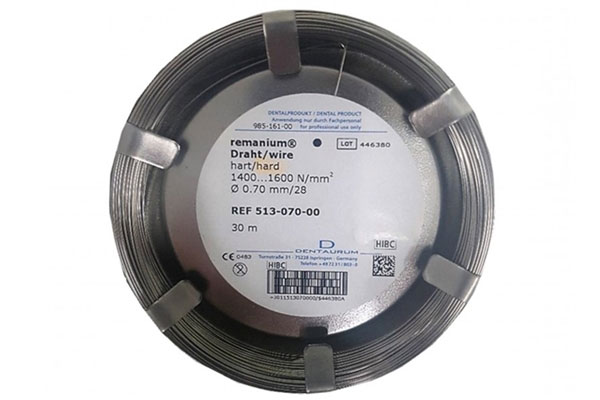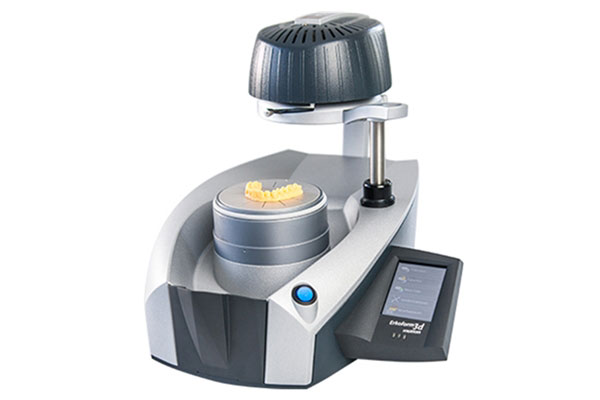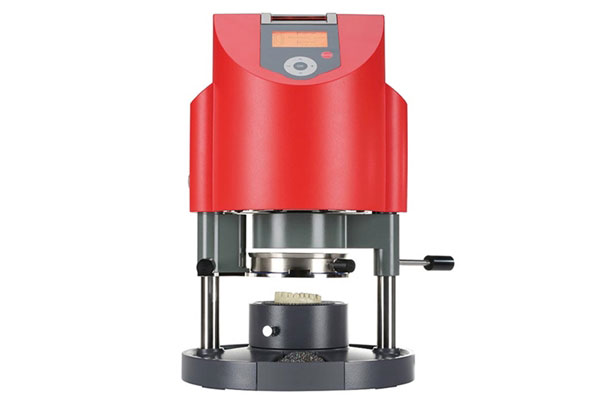Dental Retainers Lab from China
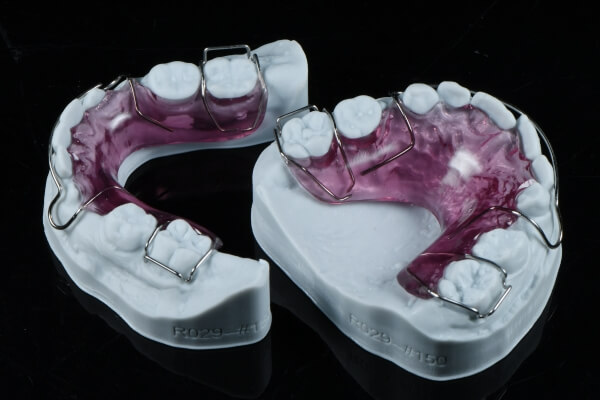
Robust Dental Retainers
A dental retainer is a plastic or metal device that helps hold your teeth in place after finishing an orthodontic treatment with braces or invisible aligners. They are specially designed for each patient and prevent teeth from shifting into their original position before receiving braces.
Dental retainers are as important as an orthodontic treatment to straighten your teeth. After straightening the teeth and removing the braces, the wearer’s teeth remain in a new, unstable position. It will take time for them to adjust to their new biological position and settle down. Retainers “retain” your teeth in their new position, preventing recurrence and damage from expensive orthodontic treatments. Because of this, the first year after orthodontic treatment is crucial.
Featured Dental Retainers

Hawley Retainer
Hawley retainers are removable retainers made of bendable wire and plastic or acrylic material. The wire is passed through the front of the tooth, and the plastic or acrylic part is custom-made to fit snugly in the mouth. With these retainers, you can choose from a wide variety of styles and colors. Hawley retainers are constructed to allow natural tooth contact for added comfort. It can last for a long time, if it is properly cared for. They are also easy to clean.
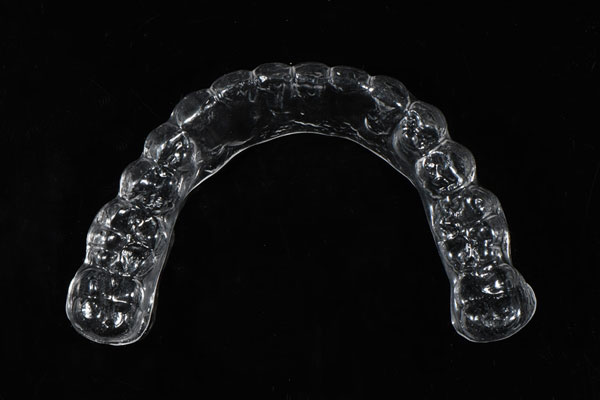
Clear Retainer
Clear retainers are removable retainers designed to fit your newly positioned teeth perfectly. They are usually thermoformed from clear plastic sheets. These are one of the most popular types of dental retainer, because they are virtually invisible compared to the Hawley retainer. Also, they are less bulky and less likely to interfere with your speech. However, clear retainers have a relatively short lifespan, because the plastic eventually wears out and may even crack.
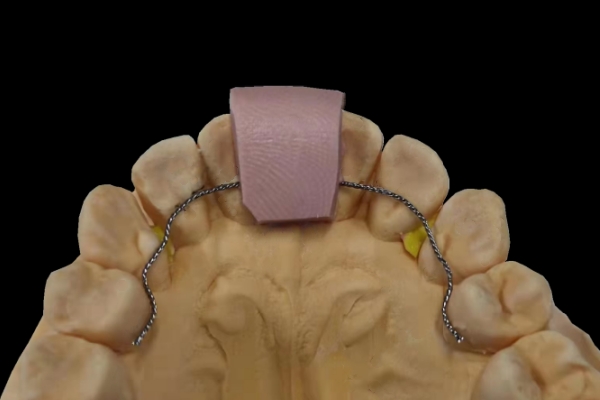
Lingual Wire Retainer
Lingual wire retainers (or fixed tongue retainers) have a wire attached to the inside of the front tooth, so it cannot be seen when you smile. It is often used after you have worn clear retainers or hawley retainers. The best thing about a lingual wire is that it is a permanent retainer (sticks to the teeth) and you don’t get it out on daily basis. However, you should be sure to clean it carefully, so it doesn’t lead to plaque build-up and subsequent dental problems.
Dental Retainers Lab Equipment & Material
Robust Dental Retainers Specification
| Product: | Dental Retainers |
| Plastic sheet: | Erkodent from Germany |
| Retainer resin: | Dentaurum from Germany |
| Retainer wire: | Dentaurum from Germany |
| Design software: | 3Shape |
| Our scanning device: | 3Shape |
| Way of manufacturing: | Thermoforming, Casting |
| Our vacuum foaming machines: | Erkodent; Druformat |
| Warranty: | 6 months |
Dental Retainer FAQ Guide
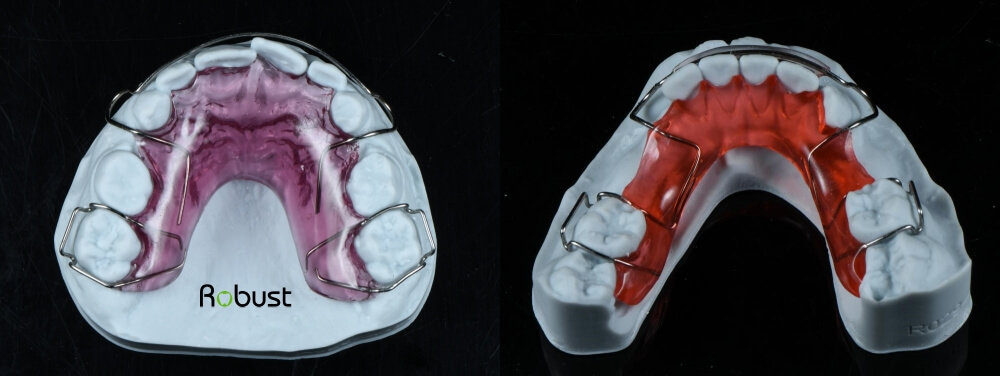
1. What is the function of a dental retainer?
Note that retainers are not the same as braces or clear aligners. Braces and clear aligners gradually move your teeth into a straighter position over several cycles. When you take off your braces or clear aligners, your orthodontist suddenly tells you that you need a retainer, which ensures your smile remains attractive. Here are some main function of a dental retainer:
- Stabilize your bite
- Preventive treatment reversal
- Keep space for wisdom teeth and new teeth
- Align the jawbone with the gums
- Helps teeth stay in place
Generally, retainers are made of metal, plastic, acrylic, or polyurethane and fit the new position of the tooth. This “tool” is strong enough to keep your teeth from returning to their original position. Ultimately, whatever your braces initially straightened will stay straight because of the retainer.
To make a custom retainer, your orthodontists will make a dental impression or digital scan on your teeth. Then they’ll send it to Robust dental lab, which will produce a retainer that fits in your mouth. At your next visit, your orthodontists will make sure it fits you comfortably before giving you instructions on how to wear it.
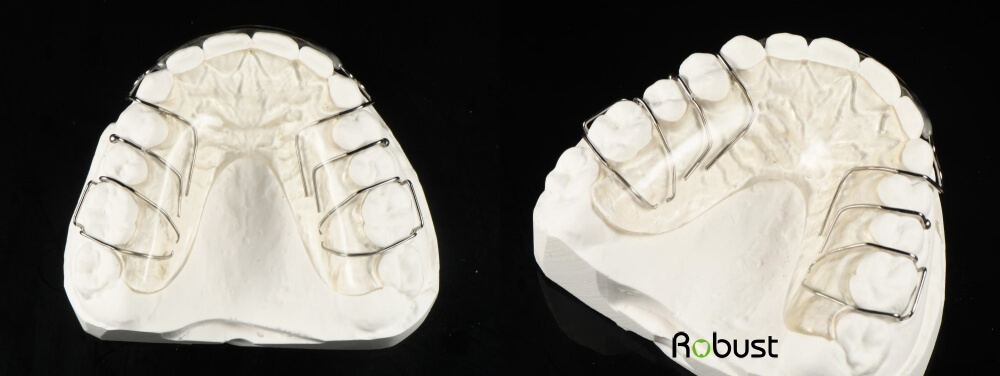
2. Advantages and disadvantages of removable and permanent dental retainers
There are two main types of dental retainers – removable retainers and permanent retainers. There are advantages and disadvantages to both types. Read on to learn more about both types before you make a decision.
Advantages of removable retainers
- The transparent retainer is almost invisible and easy to wear. It completely covers the teeth, keeping them in their new position.
- Easier to clean and help maintain good oral hygiene, because you can remove them before brushing and flossing.
- Easy teeth whitening and clear retention after treatment. The patient can apply bleach inside the retainer and use it as a bleaching tray.
Disadvantages of removable retainers
- You need to remove retainers before eating
- You need to remove retainers before drinking hot water
- You need to remove retainers before drinking coffee or strong tea, since they will get stained
- Patients usually lose them.
Advantages of permanent retainers
- In the most prone to recurrence, permanent retainers are ideal.
- The permanent retainer does not need to be removed before meals or other activities, saving daily removal and replacement time.
Disadvantages of permanent retainers
- Since the retainer is attached between the teeth, using the retainer can prolong the flossing time.
- They can sometimes affect oral hygiene because they are more susceptible to surrounding plaque.
- Hard, sticky, brittle food may cause the retainer to break.
- They are only attached to the 6 front teeth and therefore do not prevent the back teeth from recurring. Sometimes, they cause language barriers.
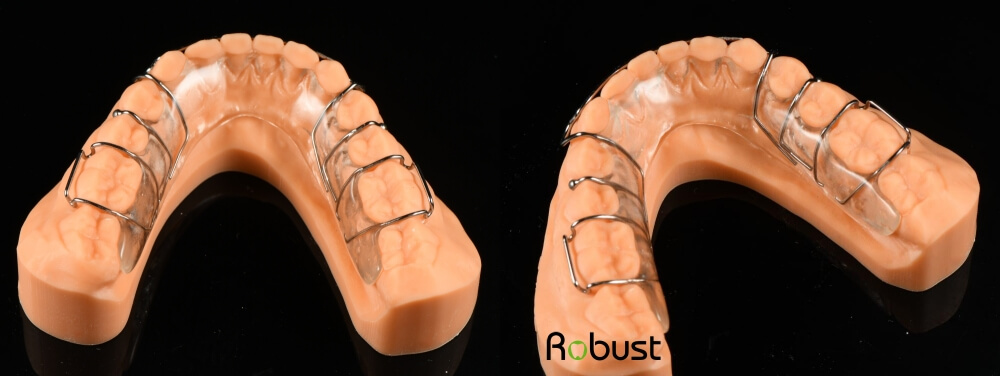
3. How long do I need to wear a dental retainer?
Every orthodontic treatment is unique, and the exact time your retainer is worn depends on the type of orthodontic correction you receive. Specifically, wearing a removable dental retainer is divided into several stages.
In some cases, your orthodontist will install a permanent retainer behind your teeth. Patients receiving this treatment will wear the retainer all the time, even while they eat and brush their teeth. This type of retainer can only be removed by a dentist, and when removed, the patient will be given a removable retainer that can be worn while sleeping.
Usually, you will have to wear removable retainers for at least 1 year. However, if you have some teeth extracted, you will have to wear retainers for 2 years. Most patients get a set of retainers that are removed for eating and brushing. We see the best results when our clients wear the retainers according to the following times:
- The first 6 months: During this period, retainers should be worn for more than 22 hours a day. They should only be removed when brushing, flossing, or eating. Your orthodontist will continue to monitor your progress and then approve you to wear them only at night.
- After 6months: After the first 6 months, you’ll wear retainers for 12 hours a day (or nightly) for the next 6 months. By the end of the first year, your teeth should be stronger and less likely to come back any time soon. However, that doesn’t mean your days with retainers are over.
- From year two to the rest of your life: Now, you can wear retainers occasionally, but a good rule of thumb is to wear it every other night.
4. How to take care of your dental retainer?
What you should do:
- Carefully follow the instructions for wearing, cleaning, and storing braces.
- Wash the retainer with cold or warm water after eating or drinking coffee and tea. You can also use toothpaste and a toothbrush to clean them.
- Be sure to take your braces out when you eat.
- Be sure to keep the dental retainer in your mouth or in a designated container. Placing it elsewhere may result in accidental damage or misplacement.
- Be sure to put your name and phone number on your retainer box, so it can be retrived if it gets lost.
- Be sure to brush your teeth after every meal and before wearing braces.
- Always use your hands before placing the retainer in your mouth. Make sure it’s in the correct position before biting down. The jaw muscles have more strength than your hands, and when they’re out of place, you can easily break your retainer by biting down.
What should be avoided:
- Avoid adding alcohol-based mouthwash or bleach, as they can damage your mouth and plastic braces.
- Do not place the braces in a hot area, as heat may cause the braces to melt, deform, or deform.
- Don’t wrap your retainers with a napkin during meals, since you may mistake the napkin for a used one and accidentally throw the retainers away.
- Don’t play with braces in your mouth.
- Do not bite the retainer to move it into place.
- Do not leave braces within the reach of children or animals.
- Do not brush the retainer with baking soda. Like toothpaste, it is abrasive and can leave scratches on the braces.
- Don’t use a hard-bristled toothbrush to clean them — choose a soft-bristled toothbrush.
- Do not drink anything other than water while wearing braces.
- Do not wear retainers during contact sports. Wear a mouthguard.
- Don’t swim with retainers in your mouth. You may have difficulty finding it if it falls out of your mouth. Also, chlorinated water can damage materials.
- Don’t expect a pair of braces to last a lifetime. Proper care and maintenance can prolong their life. When they’re too damaged, you’ll need a new one.
If you forget to wear a dental retainer, you can wear it for a few days throughout the day to realign your teeth. You may experience pain when your teeth are rearranged. If you are unable to push your braces into place or do not fit properly, please call our office as soon as possible.
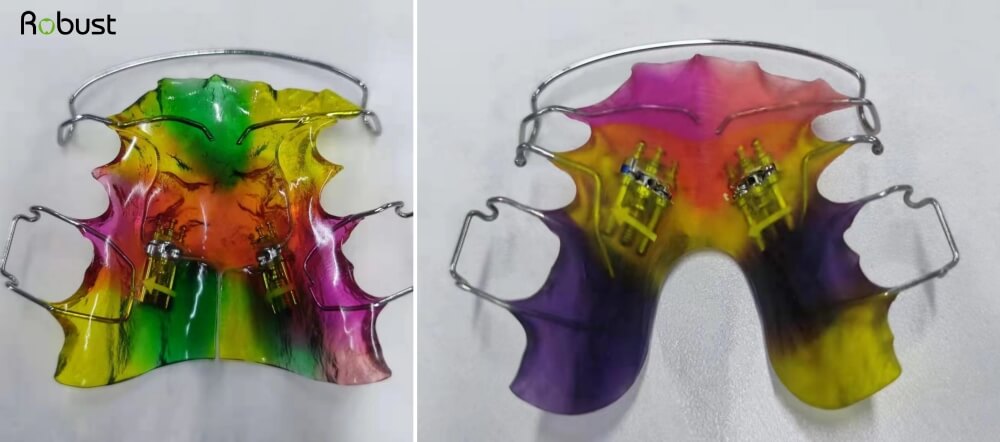
5. What shouldn’t you eat when you have a dental retainer?
If you wear a fixed retainer, you’ll need to avoid most of the same foods as wearing braces. Some of these include, but are not limited to:
- Chewing gum
- Sticky Candy
- Nut
- Hard candy
- Ice
- Popcorn
- Tough, chewy foods
For foods like ice and hard candies, the consensus is not to bite them. It’s okay to leave them in your mouth and let them dissolve, but don’t try to chew them. Any food that could get caught between the teeth and the retainer or damage the retainer should be avoided.
When it comes to a removable retainer, the list of foods to avoid isn’t long. As you might have guessed, you can eat anything that has a removable retainer.
Before eating or drinking, remove your braces and eat as normal. The only two rules you need to pay attention to are: keep the retainer in a safe place when eating and don’t try to eat with the removable retainer on.
6. What should I do if the braces are broken?
When the unavoidable happens, you should make an appointment with an orthodontist as soon as possible. If you’ve had retainers for less than a year, you’ll want to schedule an emergency appointment to get a new one. Remember, the longer you wait, the longer it will take for the teeth to return to their original position.
